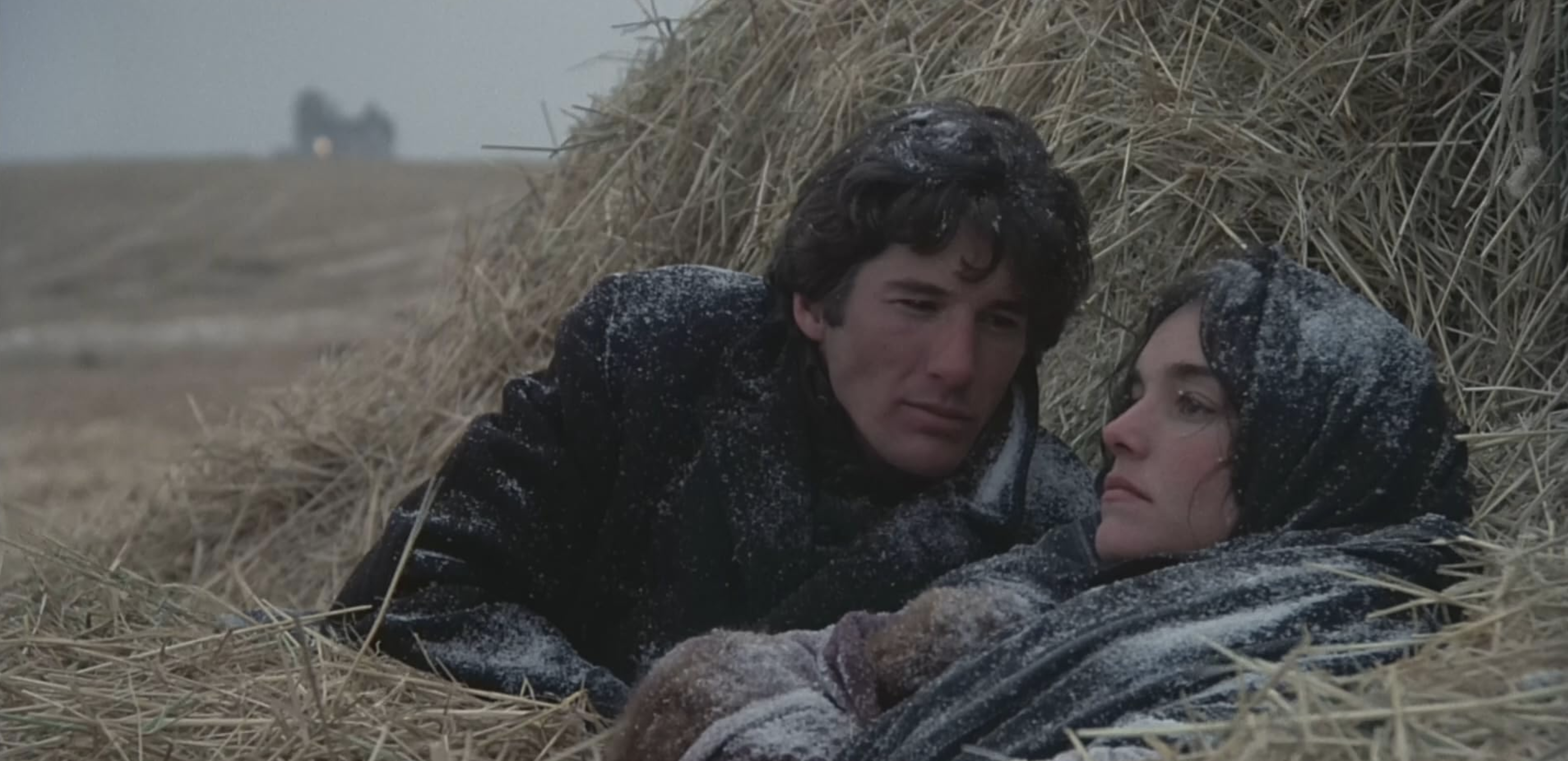Best computer speakers 2025: upgrade your desktop audio with our 5 expert picks
Class-leading compact speakers for every desk and budget
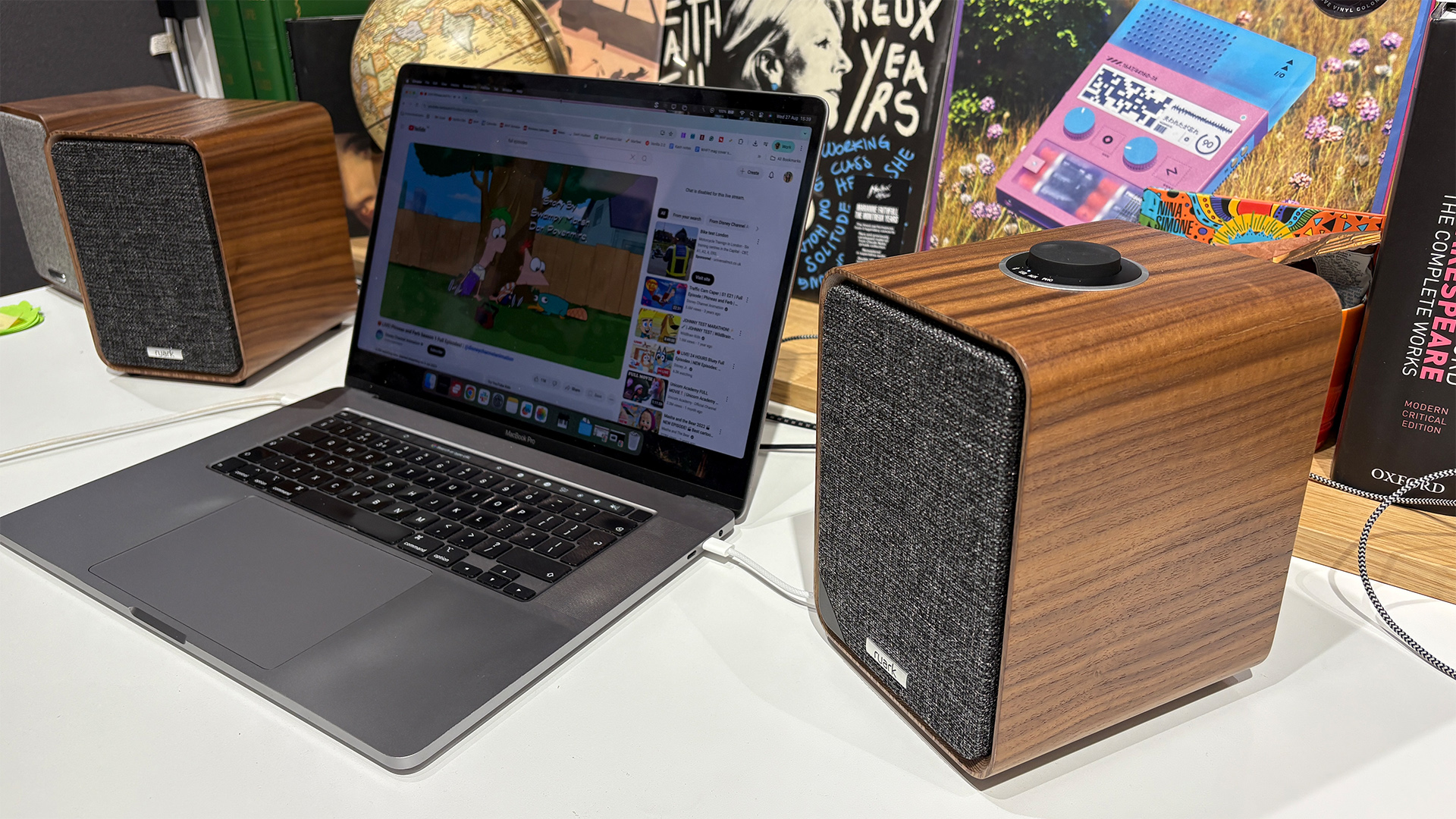
In brief
- The best desktop speakers overall are the Elac Debut Connex DCB41 – they're feature-rich with an insightful performance.
- Best for audiophiles are the Acoustic Energy AE1 Active, while we rate the KEF LSX II LT as the best system.
- If you have less to spend or less space, you'll be well served by the Q Acoustics M20 and Ruark Audio MR1 Mk3, our picks for best budget and best compact, respectively.
With big screens, easy operation and a wealth of desktop music apps at their disposal, computers and laptops would be ideal machines for music listening if only they had one thing – decent built-in speakers or headphone outputs.
Unfortunately, that is not the case. Speakers and digital audio hardware inside these do-it-all machines are, just like those integrated into TVs, phones and other multi-tasking everyday devices, far from ideal – they are thin, lifeless and quite frankly not good enough for you.
To truly keep you going during the 9 to 5, your desktop audio setup needs a significant quality boost. And if you would prefer that to come via speakers rather than wired headphones (and a DAC), you should consider a pair of neat desktop stereo speakers to flank your machine or sit on a nearby shelf.
The computer speakers below – tested by What Hi-Fi?'s expert team – all have amplification built-in, making them active or powered and therefore ideal to plug straight into your machine.
These will fire out your Tidal or Spotify playlists, YouTube videos or even Zoom calls with far greater skill than your laptop could on its own, without taking up much room.
Just take note of the connections and specs as some are better featured than others – they will all connect to and play music from your computer, but some will also offer Bluetooth streaming for wireless playback, while others go the whole hog to integrate wireless network streaming (and a phono stage for turntables) if you want it.
Jump to our how to choose advice section, or dive straight into our editors' picks...
The quick list

If you’re looking for a great-sounding but affordable pair of computer speakers, these Elacs will be perfect for you.
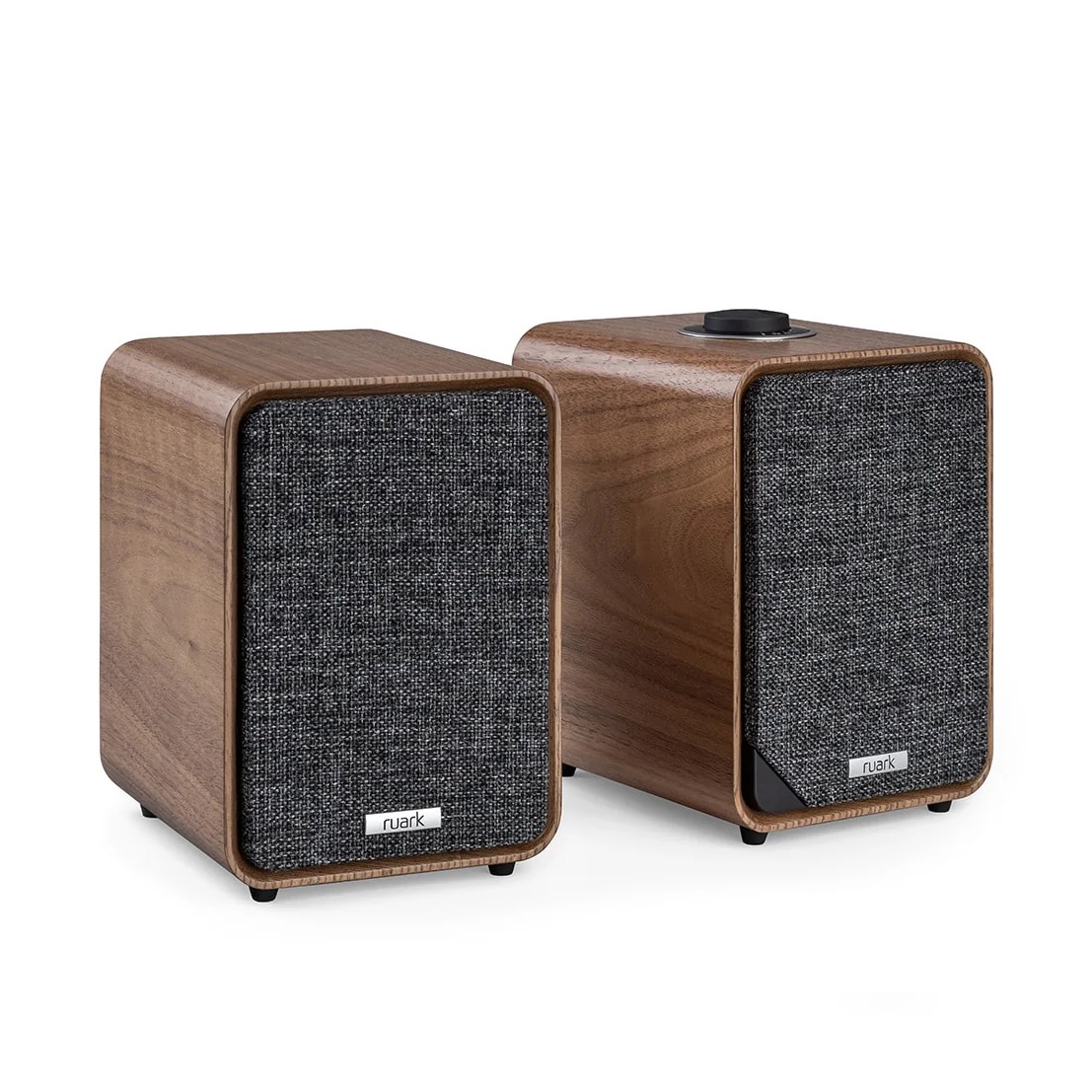
Stylish and petite desktop speakers that deliver a powerful and dynamic sound, are lovely to use and have a great phono stage for direct use with turntables.

Packed with connectivity options, you’ll be hard pushed to find a more versatile budget option than these unfussy Q Acoustics.

A stylish, compact pair of speakers that boast all the wi-fi streaming smarts you will likely need – an ideal all-in-one system for your desktop.

A sonically sophisticated stereo pair that performs as well as any comparably priced amplifier and speakers separates pair.
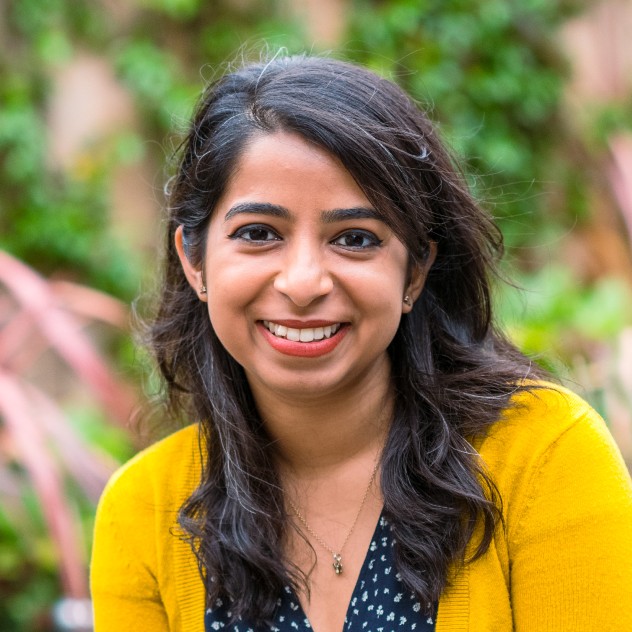
I'm the Hi-Fi and Audio Editor of What Hi-Fi? and have tested dozens of speakers of all types and budgets during my decade of reviewing. The best desktop speakers should still sound great for the money, and while a given model's dimensions and input options are important, you're wasting your cash if you don't prioritise decent sound - otherwise, you may as well just stick with the speakers built into your laptop or computer. On this list, we've chosen primarily hi-fi-grade desktop/bookshelf models which, thanks to their varied connectivity options, can be hooked up to your PC or laptop with ease. That way, you're still getting compactness and convenience without sacrificing great sound.
September 2025: Added 'In brief' section at the top.
Best computer speakers overall

Specifications
Reasons to buy
Reasons to avoid
The Elac Debut ConneX DCB41 are compact powered speakers, taking up so little space that they can fit neatly on a desktop flanking your computer. If needs be, though, the talented pair can also work in a decently sized room next to your TV or stereo system. The two speakers are linked with a standard, supplied speaker cable, but otherwise they are very easy to house indeed.
Playback from multiple sources such as your computer and smartphone is possible thanks to Bluetooth aptX streaming, and USB type B input (which plays hi-res tracks up to 24-bit/96kHz). You can even use the Elacs as a decent soundbar alternative thanks to their HDMI ARC and optical inputs. There's even a moving magnet phono stage built in so you can plug in a turntable and get your records spinning, although this sounds dynamically compressed and lacking in clarity and expression.
In our Debut ConneX DCB41 review, we recommend using the digital inputs if you want to hear the Elacs at their best: "Used this way it is a clear, balanced and insightful performer. There’s a good level of detail here and the ability to organise that information into a cohesive and musical whole."
The overall presentation is controlled and even-handed in the manner of Elac’s Award-winning Debut 2.0 series of passive speakers. These speakers happily fade into the background, letting the music take centre stage – nothing jars or distracts from it.
The new and more dynamically powerful Ruark MR1 Mk3 (below) pose a strong alternative at this price, but the Elacs do have the advantage of the HDMI ARC connection.
We're big fans of systems such as this, and the Elac's combination of size, features, performance and reasonable price (slashed down from its original £529 / $595 / AU$900) means they get our hearty recommendation.
Read our full Elac Debut ConneX DCB41 review
Best compact computer speakers
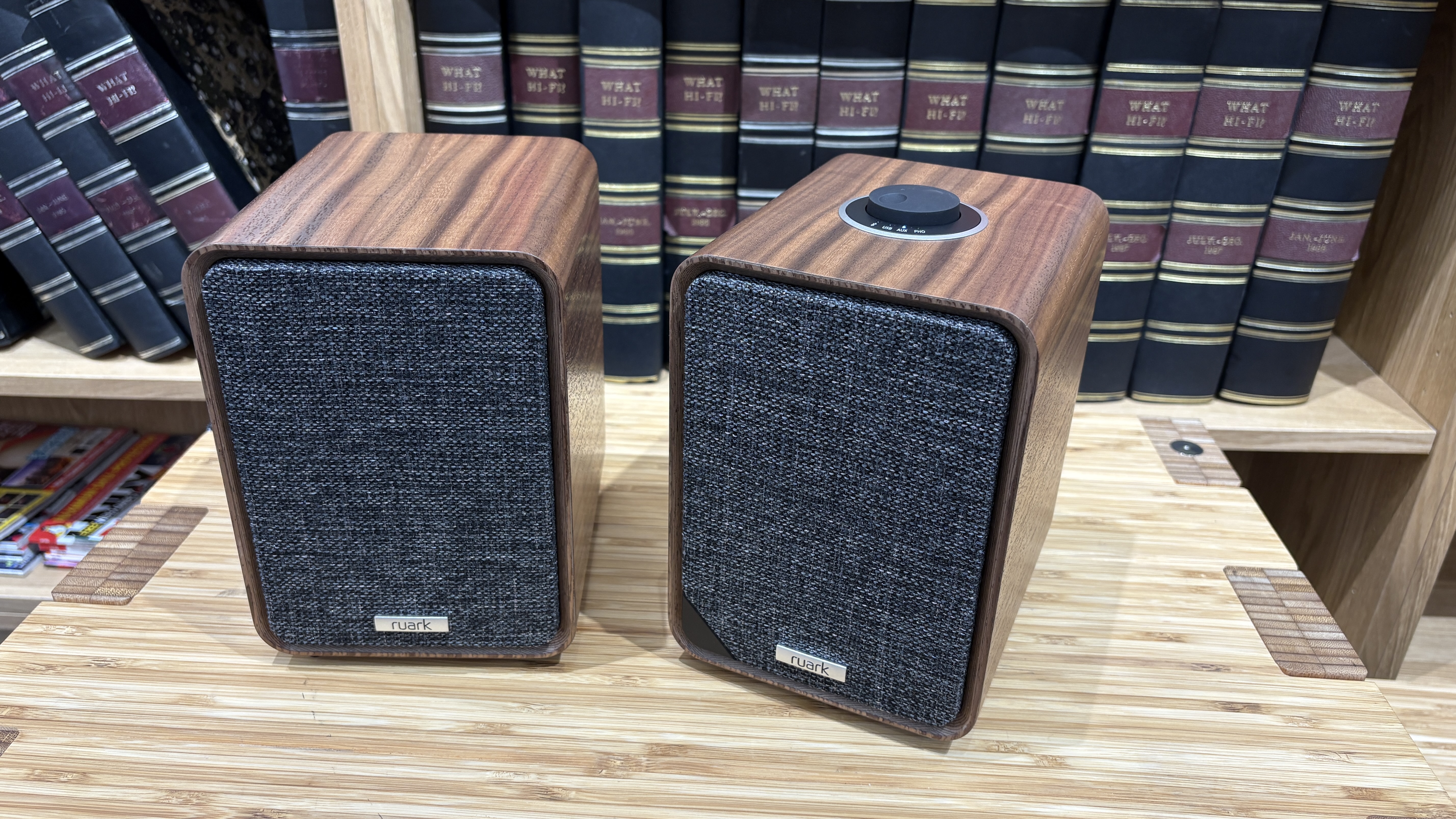
Specifications
Reasons to buy
Reasons to avoid
Ruark's petite and stylish MR1 speakers have been our long-standing recommendations if you're looking for small, great-sounding pair of powered speakers, and the latest third-generation model continues that recommendation.
Building upon the Award-winning MR1 Mk2 in every way, the MR1 Mk3 offer a huge step up in performance, more inputs and a sleeker design – with only a £50 rise in price in the UK. Bargain.
The cabinets have been given a refined facelift but retain the classy design and lovely build quality, complete with the intuitive and tactile RotoDial controller with which you can easily control volume, inputs and Bluetooth pairing. They are ever-so-slightly bigger than their predecessors, but still fit neatly on either side of your laptop and fit onto a small desk, bookshelf or TV stand.
They now feature Class D amplification (25W per channel) and a bigger mid/bass driver, and have gained a moving magnet phono stage (so you can plug a turntable directly into it) and a USB-C input for connection to laptops and smartphones. The speakers can handle hi-res files up to 24-bit/192kHz, while Bluetooth aptX HD is supported.
The phono stage's quality is excellent. We've never heard such a convincing case for powered speakers to be paired with a turntable, and the MR1 Mk3 work brilliantly when paired with a Rega Planar 1 or even the pricier Planar 3 – "records sound clear, well-defined, and confident", as we said in our review.
The powerful, punchy, dynamic sound coming out of these compact speakers is surprising and impressive, as is their ability to stay composed even at louder volumes. Rhythmically and dynamically, the Ruarks are hugely entertaining and satisfying, with ample detail and subtlety combined with a lovely soundstage.
They sound considerably bigger and more spacious than their predecessors, too, and our only minor niggle is that the muscular bass could do with a hint more subtlety. We said in our review that these lively, energetic Ruarks work well with all genres we played through them, and retain their character across all inputs.
We concluded: "Their user-friendly design and lively presentation make them an appealing pair of powered speakers, and that talented built-in phono stage makes them well-suited to creating a neat and tidy turntable system."
We can't recommend them highly enough.
Read our full Ruark MR1 MK3 review
Best budget computer speakers
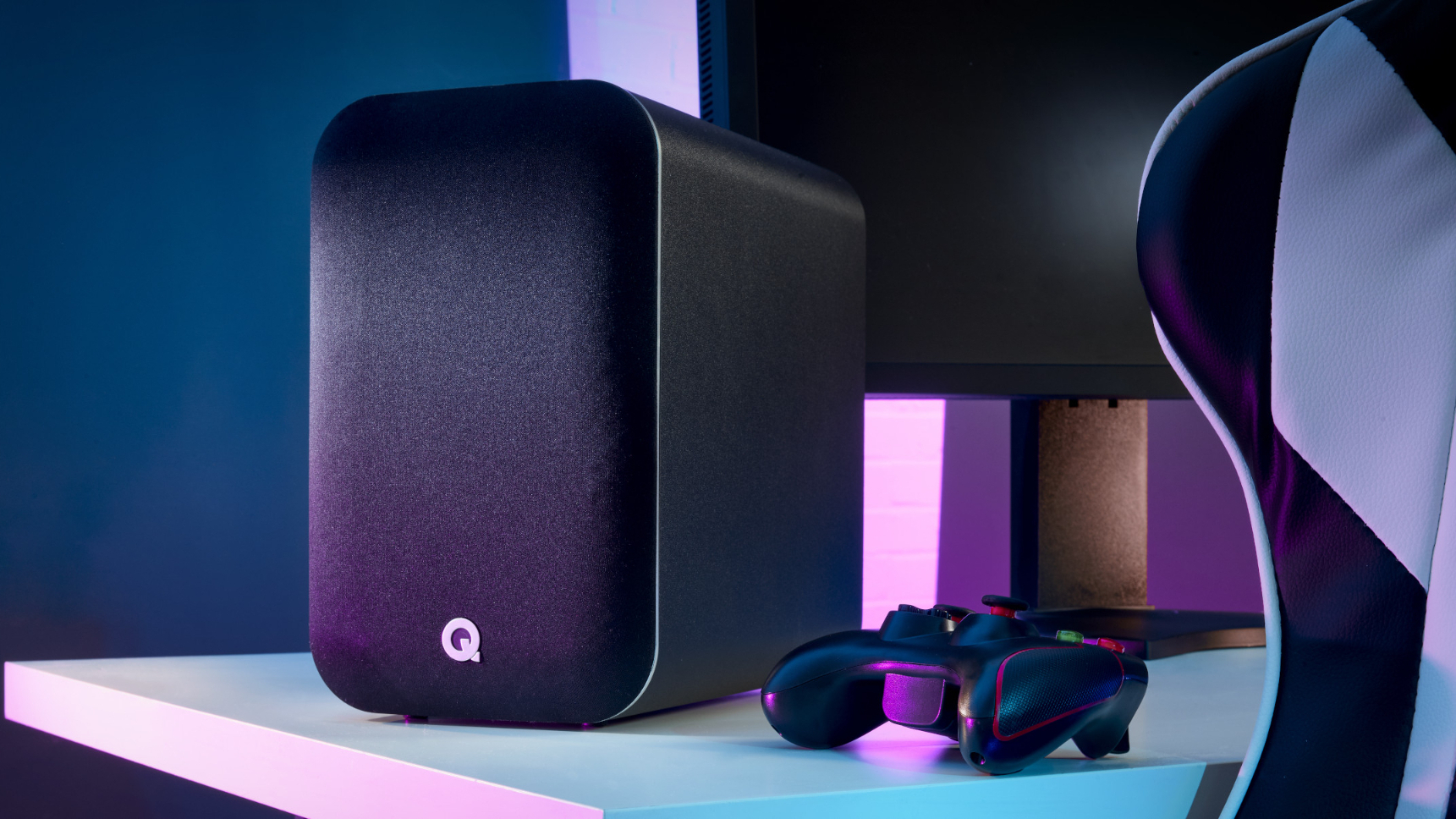
Specifications
Reasons to buy
Reasons to avoid
Versatile, simple to use, nicely put together and extremely affordable, the Q Acoustics M20 might not be the most compact pair of powered speakers on this list, but they offer such a versatile range of features that we'd certainly find a way to accommodate them on our desktop.
The modern-looking units have a lot of useful connections on the back – TVs, CD players, turntables and laptops can also be wired to the M20 through optical, RCA line-level, aux and USB Type B connections, and there is even wireless Bluetooth streaming if you aren't a fan of cables.
One speaker in the pair is the mains-powered 'master' and feeds the other through a supplied connector cable. Crucially, they really sound the part, feeling full, loud, spacious and energetic. For affordable speakers that pack in so much, our experts were impressed that they were so refined and detailed. When comparing them against the much smaller but similarly priced Ruarks above, they noted in our M20 review how the Q Acoustics model "feels fuller, louder and less compressed".
Q Acoustics has made an unfussy, just-add-source set of powered speakers that we find impossible to dislike. With all of the amplification squirrelled away in the master speaker and the plethora of connectivity and placement options covered, the M20 are far more likely to become your entire music system than simply your new desktop speakers – and for this money, you’ll be hard pushed to better the sound quality with hi-fi separates. Well worth considering.
Read our full Q Acoustics M20 review
Best computer speaker system
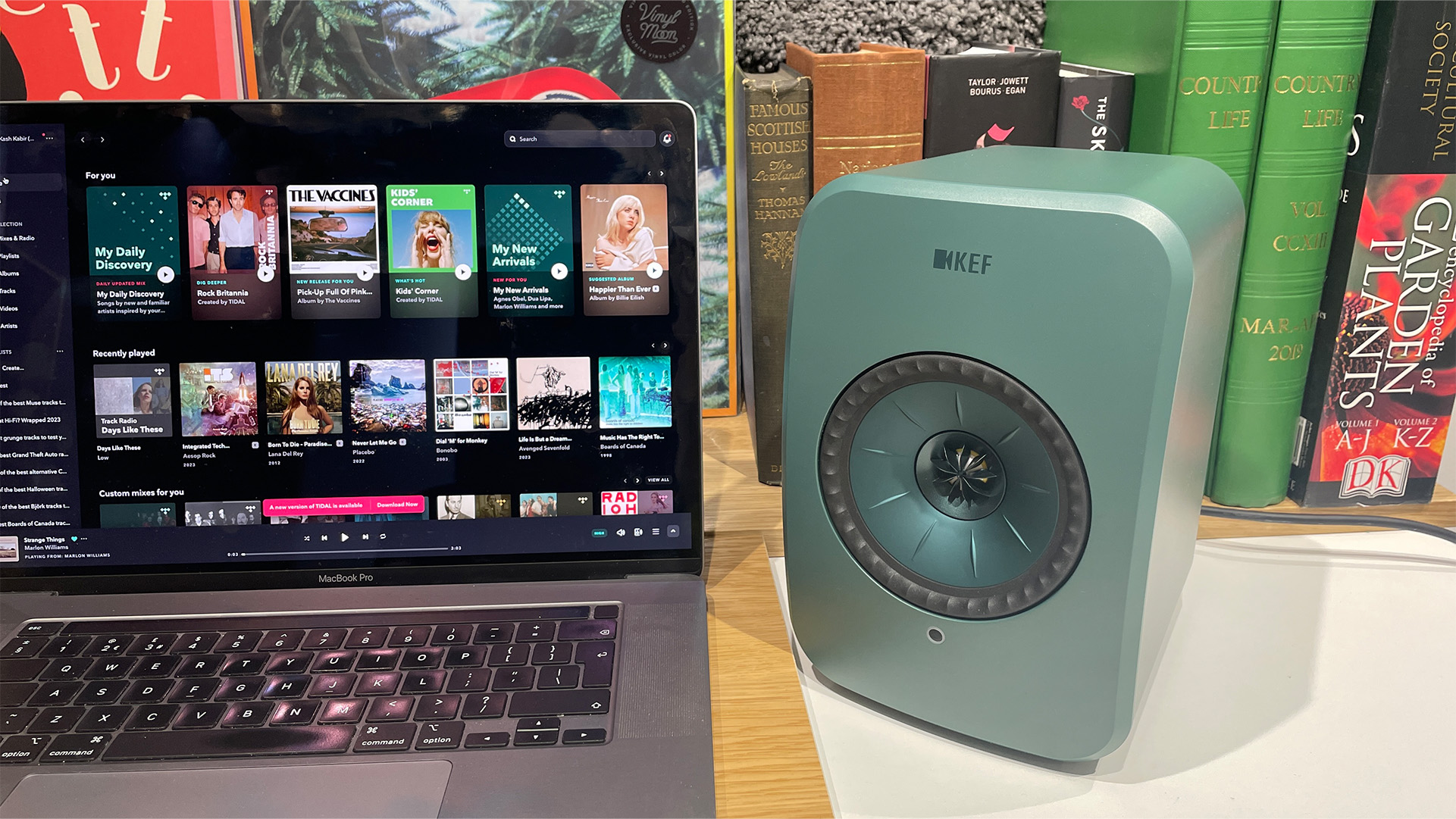
Specifications
Reasons to buy
Reasons to avoid
The standard KEF LSX II speaker system was a certified What Hi-Fi? Award winner and a key entry in this very list. Now though, we have a slimmed-down, more affordable version of the LSX II that we think offers even greater value – if you can live with a few small sacrifices.
In terms of their size and shape, the newer LSX II LT are practically indistinguishable from the standard LSX II, keeping the iconic tangerine waveguide and shiny Uni-Q driver array for which KEF is so well-known. The 11th-gen 11.5cm Uni-Q driver array, in which the tweeter sits in the centre of the mid/bass, is here too, with the Class D active speakers putting out a total of 200Ws – 30 of those to drive the tweeter, and 70 powering the mid/bass across each channel.
KEF has taken a winning formula and streamlined it beautifully. The key connectivity options – an HDMI ARC port for your TV, optical input and subwoofer output – are all here, but unlike the standard LSX II, the LT only require a single mains lead plugged into the primary unit while the spare speaker takes power via a USB-C interspeaker cable. There's no aux input or the chance to have a wireless connection between the speakers, though, so if you really need those facilities, we'd recommend considering the full-fat KEF LSX II.
Sonically, though, the LT version doesn't miss a beat. When comparing the LSX II and LSX II LT side by side, our reviewers said that "the spin-off shares the same sonic credentials as the LSX Il, with almost no sonic shortcomings". The LT deliver punch, focus and a sharp sense of rhythmic propulsion without ever feeling strained or unbalanced. The speakers' profile is very marginally on the lean side, but never to the point at which you'd think they were thin, weedy or lacking in lower-end muscle.
Sonically superb and slimmed down without becoming overly compromised, the KEF LSX II LT feels like a really smart investment and the better option of the two LSX II models, hence why it has taken the What Hi-Fi? Award 2024 crown as the 'best speaker system' at its price level.
Read our full KEF LSX II LT review

If you want a versatile speaker system that you can pop on your desktop to boost your laptop, I'd happily direct you to the KEF LSX II LT. The great thing about the LSX II LT is that, like the Elacs above, there's an HDMI ARC connection, allowing you to plug the speakers into your TV and get cinematic sound without the need for a separate soundbar. Plus, if you can live without that aux input (RIP!), it arguably represents far better value for money than its slightly pricier LSX II sibling. You might care to look at our LSX II vs LSX II LT for a full comparison.
Best computer speakers for audiophiles
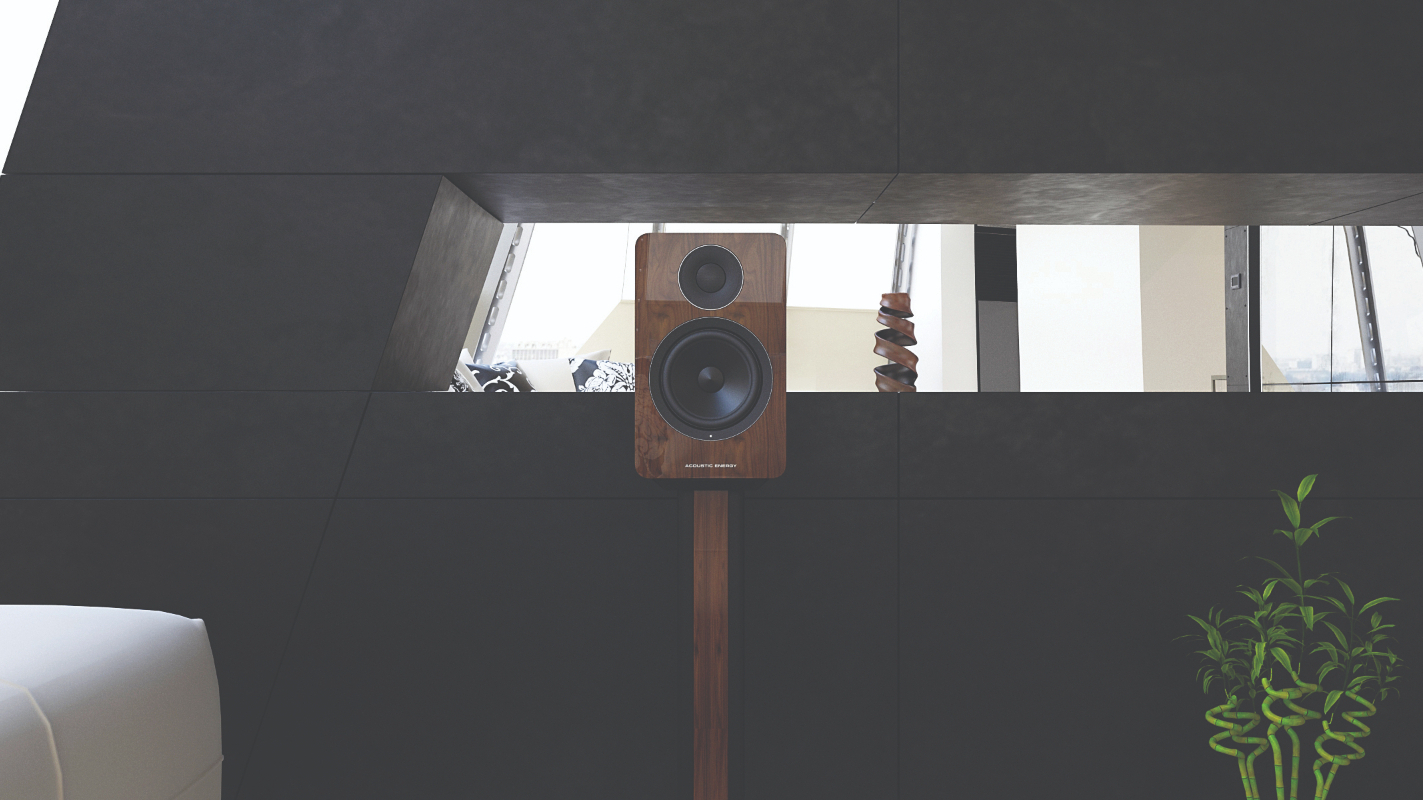
Specifications
Reasons to buy
Reasons to avoid
It’s difficult to think of an amplifier and passive speakers separates combo that could better these Acoustic Energy active speakers for the same money.
These former What Hi-Fi? Award winners do everything with a flourish. They're pretty basic regarding set-up and function – just hook them up to your source via their balanced XLR or RCA inputs and you’re away. There’s no Bluetooth, but you can always affordably attach a separate module (such as the iFi Zen Blue) post-purchase.
You'd need to invest in more expensive speakers and amplifiers to offer a marked improvement on these Acoustic Energy active speakers. They certainly gave our reviewers a good time: "We get through a hefty chunk of our library over a number of days, and with each album the AE1s’ response is absolutely a delight," reads our AE1 Active review. Timing is spot on, the punch and drive apparent through all musical genres is thrilling, and the dynamic range is subtle and extensive enough to spotlight differing intensities of beats that can, texturally, be cluttered in other systems. There's fine integration and tonal balance too, with a maturity that's truly impressive.
These speakers have been around for a long while (we reviewed them back in 2018), yet their continued availability is a testament to their class. With that said, you owe it to yourself to track down a pair and discover the AE1's talents for yourself.
Read our full Acoustic Energy AE1 Active review
Also consider
- Ruark MR1 Mk2: These older models may not be as powerful or have as many features, but they remain a solid buy. These petite speakers are beautifully made, will fit in anywhere, and sound much bigger than they look – a smart addition to any desktop.
- KEF LSX II: While the newer and more affordable 'LT' version in our list is, in our minds, the better value option, those who value the LSX II's aux input and/or wireless (as opposed to cabled) link between the speakers may well be happy to pay the premium. Want this in a bigger, pricier and better-performing package? Check out their siblings, the KEF LS50 Wireless II.
- Triangle AIO Twin: Another alternative to the KEF LSX II LT, these all-in-two, streaming-savvy computer speakers sound bags of fun and – bonus – offer a phono stage for turntable hookup.
- Audio Pro C20: While all the pairs on this list are two-box stereo offerings, if you want an affordable single-box solution, this feature-packed Audio Pro is a great choice. It combines modern-day connectivity (including Bluetooth, AirPlay and Spotify Connect) with a very mature sound that will happily fill a small office room.
How to choose the best computer speakers for you
When purchasing a pair of PC speakers for your laptop/computer desktop system, size will surely be a factor in your decision. All of the pairs of computer speakers that we've tested are inherently from the more compact end of the speaker market and better suited to being perched on a desk than the majority of stereo speakers.
But it isn't just size that matters; one of the beauties of having speakers within your workspace is that they can connect easily to your phone or laptop. Some computer speakers can connect via Bluetooth so you needn't worry about cables trailing all over the place, while others need to connect over USB via a cable – not as convenient perhaps but offering stable and higher-quality transmission.
Additionally, some computer speakers support wi-fi and integrate network streaming smarts, while others can connect to your TV and/or turntable to make for a more all-encompassing home system.
Consider what connections and features you need, particularly if you want to connect something other than a laptop, and check them against the spec box of each entry in this best computer speakers list. Avoid opting for computer speakers with lots more features than you need, as you will only be paying for them and they may not sound as good as a comparatively stripped-back models around the same price (or perhaps even cheaper).
What every pair of computer speakers above does have in common, however, is a class-leading performance at their respective price point, making them easy to recommend.
Only have room for a one-box unit? Check out our best Bluetooth speakers guide.
How to set up computer speakers
Thankfully, computer speakers or PC speakers are by nature pretty simple to set up. They are compact systems that generally comprise two boxes, or maybe three if they include a subwoofer. You'll want your right and left speakers to flank your computer, laptop or monitor – either at, or just above, head height if practical, and preferably slightly angled inwards towards your seated position. There's no harm in experimenting, of course.
You'll want them sat on a sturdy desktop surface, though more substantial computer speakers like the higher-end Acoustic Energy AE1 Active above will invariably sound optimal on dedicated stands.
If a small subwoofer comes with your speakers to form a 2.1 system, you should keep it as close to your speakers and seat as possible – but on the floor. After all, you don't want their low-end output causing the table you (or the speakers) are working on to vibrate when it is kicking out bass.
How we test computer speakers
We have state-of-the-art testing facilities, where our team of experienced, in-house reviewers test the majority of hi-fi and AV kit that passes through our door – including computer speakers that will fit and work on a desktop.
What Hi-Fi? is all about comparative testing, so we listen to every pair of computer speakers we review against the current leader in its field to gauge how it compares to the best-in-class competition. We keep What Hi-Fi? Award winners, such as the Ruark MR1 Mk2 in this category, in our stockrooms so we can always put new products we review against benchmark ones we know and love.
We are always impartial in our testing and ensure we hear every pair of computer speakers at their optimum in the scenarios they are intended for. We will use them with different partnering source kit – phones, computers and, if a pair has a phono input, turntables, for example) to check the quality of each of their various connections. Naturally, we give them plenty of listening time (and time to run in beforehand).
Really, testing computer speakers is pretty similar to testing 'standard' speakers and soundbars, in that we are testing their tonality, expression, clarity and overall musicality (by which we mean their rhythmic, organisation and timing abilities).
We will test their ease of use, too – particularly if they offer built-in streaming – and scrutinise their build quality and how fussy they are to house.
From all of our reviews, we choose the top computer speakers to feature in this Best Buy. That's why if you take the plunge and buy one of the products recommended here, or on any other Best Buy page, you can rest assured you're getting a What Hi-Fi?-approved product.
You can read more about how we test and review products on What Hi-Fi? here.
FAQ
How much should I spend on a pair of computer speakers?
This is your classic "how long is a piece of string" question, but the good news is this: you don't have to spend a fortune for vastly improved sound.
Any of the models on the list above will give you vastly superior audio to that which you'll receive when simply playing through your laptop's speakers, say. Plus, it's a sound that will go much louder than your laptop or PC can manage, with far more depth, breadth and detail to boot. Bear in mind also that, because we've picked hi-fi level units, you'll be able to use any of the above candidates outside of a computer-based use case.
The best thing you can do, once you've decided on a budget (or even to help you decide on one in the first place) is to head to a proper dealership and listen to some speakers, starting at the lower end (see the Q Acoustics M20) and working your way up. If all you need is more punch, power and volume, the M20 will do a stellar job of providing everything that you need to suit your needs.
There's no limit to how much you can spend, but just bear in mind what you'll be using your speakers for. Paying thousands for a pair that will be playing from a crummy audio source (YouTube, for instance) is pointless, but if you're planning on using them a lot and for various tasks and duties, it can definitely be worth splashing a little more cash.
Which are better – standmount speakers or computer speakers?
For the purposes of this list, they're the same. That isn't true in the real world, of course, and you'll find many models out there that bill themselves much more as "computer speakers" than hi-fi-oriented bookshelf/standmount models, but we've chosen the latter for this list for several reasons.
Firstly, and most importantly, hi-fi speakers sound the best. Dedicated computer speakers are often designed for gaming or to be used for a single use case, whereas proper hi-fi models usually offer greater sonic fidelity and insight thanks to their hi-fi heritage. That's not always the case, but it's true for the units listed above.
Second, decent hi-fi speakers should be versatile enough to hook up to your PC or laptop anyway. Most of the models above have USB and aux connectivity, not to mention a wider host of options such as HDMI, optical, RCA and XLR. That makes them flexible enough to serve as your laptop speakers or the centrepiece of a dedicated hi-fi setup.
Third - and this might be personal preference - but we find many of the speakers on this list just look and feel a lot classier than many standard computer speakers. The KEF LSX II LT, for instance, is a wonderfully made system, with two deeply handsome units that will enhance your home before you've even switched them on.
Recent updates
- September 2025: Added 'In brief' section at the top.
- September 2025: Added the new five-star Ruark MR1 Mk3 to the main list, and moved the older MR1 Mk2 into the 'also consider' list.
- February 2025: No changes to this list, despite the new arrival of the Technics SC-CX700 streaming speakers, which don't perform well enough to gain a recommendation.
- December 2024: Our newly crowned What Hi-Fi? Award 2024 winners, the KEF LSX II LT and Elac Debut ConneX DCB41, have been labelled as such.
- October 2024: We have added a single-box solution to our Also Consider list to give you the option of an even more compact and fuss-free alternative.
- May 2024: No new entries, but a new Also Consider section offers further recommendations just outside of our top five, giving readers greater choice.
- February 2024: Replaced the KEF LSX II speaker system entry for the new, cheaper, five-star KEF LSX II LT.
- February 2024: Added FAQ section to help with buying decisions and frequently asked questions.
- November 2023: What Hi-Fi? Award winners labelled after the 2023 Awards Best Buys and Product of the Year announcements.
MORE:
Best speakers: standmount, floorstander, desktop, active
Looking for something more traditional? Here are our best budget hi-fi speakers
Here are all our best speaker deals
Today's best deals
The latest hi-fi, home cinema and tech news, reviews, buying advice and deals, direct to your inbox.

Kashfia is the Hi-Fi and Audio Editor of What Hi-Fi? and first joined the brand 13 years ago. During her time in the consumer tech industry, she has reviewed hundreds of products (including speakers, amplifiers, turntables and headphones), been to countless trade shows across the world and fallen in love with hi-fi kit much bigger than her. In her spare time, Kash can be found tending to an ever-growing houseplant collection and shooing her cat Jolene away from spinning records.
- Becky RobertsFreelance contributor
